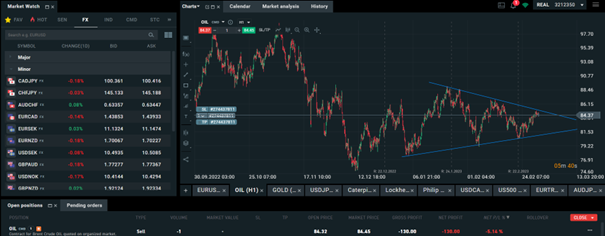Since I had my chart open, I decided to do the technical analysis first. For the past two months, the price of crude oil is moving in the range between 89 USD per barrel and 78 USD per barrel.* Since the beginning of the year, oil started to form a nice channel. From that point of view, I have decided to open a position on short, however, short term period. At the time of writing this diary, the price for a barrel was 84,57 USD. I am predicting that it could fall to the lower line of the channel, to around 81,53 USD per barrel. Investing confirmed my suspicions, as their indicators show for very short-term strong sell, as well as for mid/long term.
I went to check for the actual news to perform the fundamental analysis. Next OPEC meeting will be in April, at least it is scheduled for then. But the last OPEC meeting that was held, did not bring any positive news for the price of oil. OPEC does not want to increase the production of barrels per day, meaning that there will be typical supply and demand scenario – low supply, high demand means higher prices. On one side it makes sense, that they want to cover for the losses during Covid, when the price of oil was negative, and since everything is turning to electric, they are probably trying to milk out as much as they can. But on the other hand, it is not good for us, consumers, as we will pay the higher price. But, oil is one of the most needed commodities, so they can afford to regulate the prices that way.
In conclusion, I opened the position on short. However, I will keep an eye on it as it can change the trend. Especially when the OPEC meeting will be closer, there I expect some volatility.

* Past performance is no guarantee of future results.
Link to a 5-year chart: https://tradingeconomics.com/commodity/crude-oil








